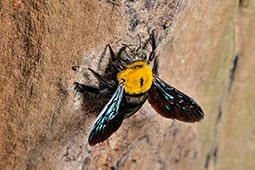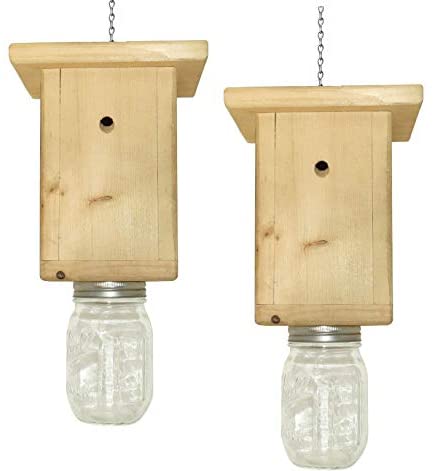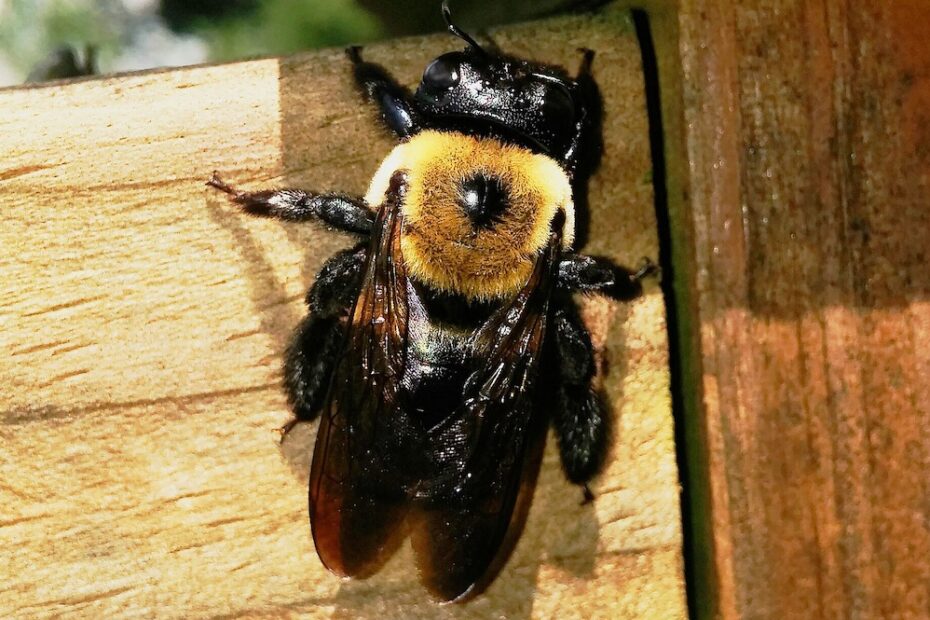How should I protect my log home?
This won’t help the bees destroying your cabin, but this is still the best line of defense against pests. The first step in making sure that your log home is as protected as possible with a borate solution like Permachink’s Shell-Guard. This product protects the wood by making it toxic to any insect that might choose to ingest it. The trick here is that Shell-Guard and products like it MUST BE APPLIED TO RAW WOOD. This allows the borate/glycol solution to permeate the woods surface. So all stains must be removed first. You can do that by either blasting or sanding.
Side note: borate/glycol treatments deter wood rotting activity such as fungi, termites, or other bugs that eat wood. This treatment will NOT deter boring bees. Any insect in your log home that is creating sawdust from the holes are drilling and not ingesting the wood, therefore products like shell-guard will not prevent these bugs from drilling your house.
BORING BEES ARE NOT AFFECTED BY SHELL-GUARD. THEY DO NOT INGEST THE WOOD!
Boring Bees? Help!
Boring bees (or carpenter bees) are large black and yellow bees that drill perfectly round holes about 1/4 inch in diameter. These bees work fast so it isn’t uncommon to them doing a lot of damage in a short period of time.
In the spring, the carpenter bee works diligently to drill holes, several inches deep, in order to lay her eggs. In the late fall the bees can be found cleaning out these old nest cavities to prepare them for survival over winter.
Carpenter bees migrate back to where they emerge making your log home a favorite location for generations to come if no action is taken.
So how do you deal with boring bees / carpenter bees? You’ll need to get a bit creative. The fact is there is no real good way to get rid of bees. BUT WAIT. WE’VE GOT A FEW TRICKS TO DETER THEM!
WHAT CAN I DO?
Carpenter bee holes that are accessible should be treated and plugged.
- Use a flexible wire to break up larvae
- Dust insecticide with a hand duster applicator
- Fill up hole with wood putty
The use of Bee Traps along with a monthly visit from your favorite pest guy will make managing them a lot easier. These bees love bare or stained wood and seem to be deterred by painted surfaces. The application of a gloss topcoat on top of your log home stain may deter them.


Another option is to spray pesticides (containing: cyper- methrin, deltamethrin or bifenthrin) onto your log home surface. This spray should act as a repellant and will need to be reapplied every 3-4 weeks. It is recommended that pesticides are only used during peak activity under the direction of the manufacturer. As always, use precaution when using these products.
I hope this was helpful. Browse some of our boring bee questions from log home owners like you.
Question 1 | Question 2 | Question 3
See you Soon,

